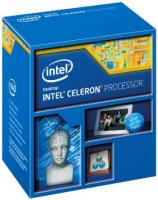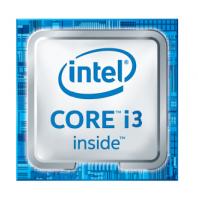| Built-in processor | Y |
| Processor manufacturer | Intel |
| Processor family | Intel® Core™ i5 |
| Processor generation | 12th gen Intel® Core™ i5 |
| Processor model | i5-1250P |
| Processor cores | 12 |
| Processor threads | 16 |
| Processor boost frequency | 4.4 GHz |
| Processor cache | 12 MB |
| Thermal Design Power (TDP) | 35 W |
| CPU configuration (max) | 1 |
| Memory slots type | SO-DIMM |
| Number of memory slots | 2 |
| Number of DIMM slots | 2 |
| Maximum internal memory | 64 GB |
| Supported memory clock speeds | 3200 MHz |
| Supported memory types | DDR4-SDRAM |
| Memory channels | Dual-channel |
| Memory voltage | 1.2 V |
| ECC | N |
| Supported storage drive types | SSD |
| Storage drive sizes supported | M.2,2.5 |
| SSD form factor | M.2 |
| Storage drive interface | M.2, Serial ATA III |
| NVMe | Y |
| Number of storage drives supported | 3 |
| Card reader integrated | N |
| On-board graphics card | N |
| Graphics card family | Intel |
| On-board graphics card model | Intel Iris Xe Graphics |
| Discrete graphics card model | Not available |
| Maximum resolution | 7680 x 4320 pixels |
| Number of displays supported | 4 |
| Built-in speaker(s) | N |
| Ethernet LAN | Y |
| Wi-Fi | Y |
| Top Wi-Fi standard | Wi-Fi 6E (802.11ax) |
| Wi-Fi standards | Wi-Fi 6E (802.11ax) |
| WLAN controller model | Intel Wi-Fi 6E AX211 |
| LAN controller | Intel I225-LM |
| Bluetooth | Y |
| Bluetooth version | 5.2 |
| USB 2.0 ports quantity | 1 |
| USB 3.2 Gen 1 (3.1 Gen 1) Type-A ports quantity | 3 |
| HDMI ports quantity | 1 |
| Ethernet LAN (RJ-45) ports | 1 |
| HDMI version | 2.0b |
| DisplayPorts quantity | 1 |
| Combo headphone/mic port | Y |
| Serial port via internal header | N |
| M.2 card slot (wireless) | 2230 (E-key) (E) |
| USB ports quantity | 4 |
| M.2 card slot (storage) | 2280 NVMe (M); 2242 SATA (B) |
| Thunderbolt 4 ports quantity | 2 |
| DC-in jack | Y |
| PCI Express slots version | 4.0 |
| Chassis type | UCFF |
| Product colour | Black |
| Cooling type | Active |
| Product type | Mini PC barebone |
| On/off switch | Y |
| LED indicators | Y |
| Cable lock slot | Y |
| Cable lock slot type | Kensington |
| ARK ID | 121632 |
| Motherboard form factor | UCFF |
| Number of processors supported | 1 |
| BIOS type | EEPROM |
| Trusted Platform Module (TPM) | Y |
| Trusted Platform Module (TPM) version | 2.0 |
| Audio output channels | 7.1 channels |
| Windows operating systems supported | Windows 10 IoT Enterprise, Windows 10 x64, Windows 11 x64 |
| Linux operating systems supported | Y |
| Compatible operating systems | Windows 10 IoT Enterprise*|Linux* |
| Commodity Classification Automated Tracking System (CCATS) | G157815L2 |
| Export Control Classification Number (ECCN) | 5A992C |
| Intel® vPro™ Platform Eligibility | Y |
| Intel® High Definition Audio (Intel® HD Audio) | Y |
| Embedded options available | N |
| Intel® AES New Instructions (Intel® AES-NI) | Y |
| Intel Virtualization Technology for Directed I/O (VT-d) | Y |
| Intel VT-x with Extended Page Tables (EPT) | Y |
| Intel Flex Memory Access | Y |
| Intel Trusted Execution Technology | Y |
| Execute Disable Bit | Y |
| Intel ME Firmware Version | 16 |
| Intel Stable Image Platform Program (SIPP) | Y |
| Intel® Optane™ Memory Ready | N |
| Intel Virtualization Technology (VT-x) | Y |
| Sustainability certificates | China Energy Label (CEL), ENERGY STAR, ErP, REACH, RoHS |
| Harmonized System (HS) code | 8471500150 |
| Power supply type | External AC adapter |
| Power supply | 120 W |
| Operating temperature (T-T) | 0 - 40 °C |
| Storage temperature (T-T) | -20 - 60 °C |
| Width | 117 mm |
| Depth | 112 mm |
| Height | 54 mm |
| Power cord included | Y |
| Additional headers | Front_panel (PWR, RST, 5V, 5Vsby, 3.3Vsby); Internal 2x2 power connector |
| Number of SATA connectors | 1 |
| HDD size | 2.5" |
| DC input voltage | 12 - 20 V |
| Status | Launched |
| Launch date | Q3'22 |
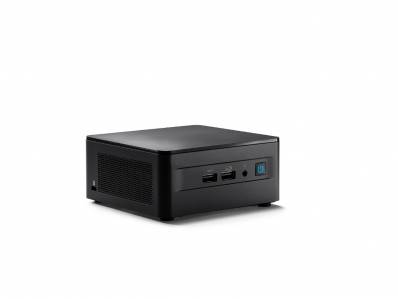

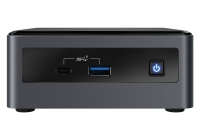
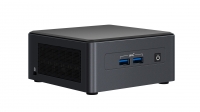
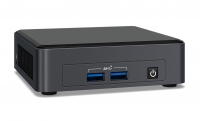




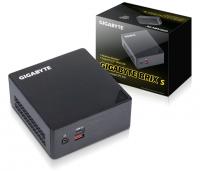
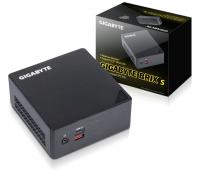
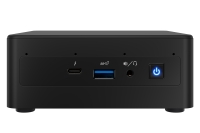
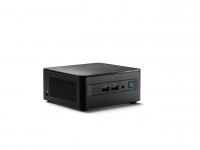
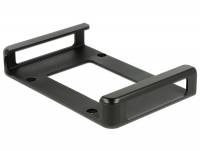
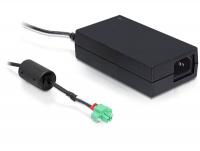
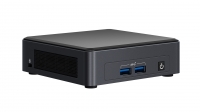
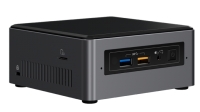
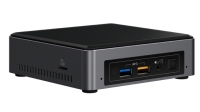
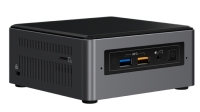
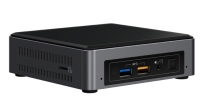
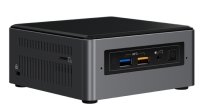
![BAREBONE INTEL® NUC6I5SYH [6.Gen.] BAREBONE INTEL® NUC6I5SYH [6.Gen.]](https://www.dcp.lv/56604-home_default/barebone-intel-nuc6i5syh-6gen.jpg)
![BAREBONE INTEL® NUC6I5SYK [6.Gen.] Small BAREBONE INTEL® NUC6I5SYK [6.Gen.] Small](https://www.dcp.lv/56602-home_default/barebone-intel-nuc6i5syk-6gen-small.jpg)
